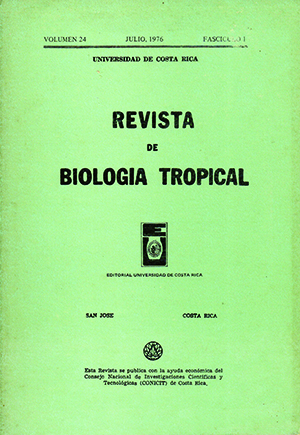Abstract
Numerical taxonomic methods were used to localize two fossil bees: Meliponorytes devictus and Electrapis proava. The results indicate that both bees belong to the tribe Meliponini (Apidae). M. devictus was confirmed as Tetragona devicta. E. proa va is strongly associated to the superior trigonas (Trigona, Scaptotrigona, Oxytrigona), and according to the different existing taxonomic schools it should be renamed either Trigona (Roussyana) proava or simply Roussyana proava.References
Kerr, W. E., & Vilma Maule 1964. Geographic distribution of stingless bees and iits implications. J. New York. Entomol. Soc., 72: 2-17.
Manning, F. 1960. A new fossil bee from Baltic amber. Verh. XI Kongr. Ent. Wien 1960, Vienna: 306-308 pl. 5.
Nelson, G. J. 1972. Phylogenetic relationship and classification. Syst. Zool., 21: 227-231.
Roussy, L. 1973. Contributions a l'étude de l'abeille tertiaire, de ses parasites et de ses enernis. Gaz. A picole, 38: 49-72.
Sneath, P. H. A., & R. R. Sokal 1973. Numerical taxonomy. W. H. Freeman, San Francisco.
Wille, A., & C. D. Michener 1973. The nest architecture of stingless bees with special reference to those of Costa Rica (Hymenoptera: Apidae). Rev. Biol. Trop., 21 (Supl. 1): 1-278.
##plugins.facebook.comentarios##

This work is licensed under a Creative Commons Attribution 4.0 International License.
Copyright (c) 1976 Revista de Biología Tropical


